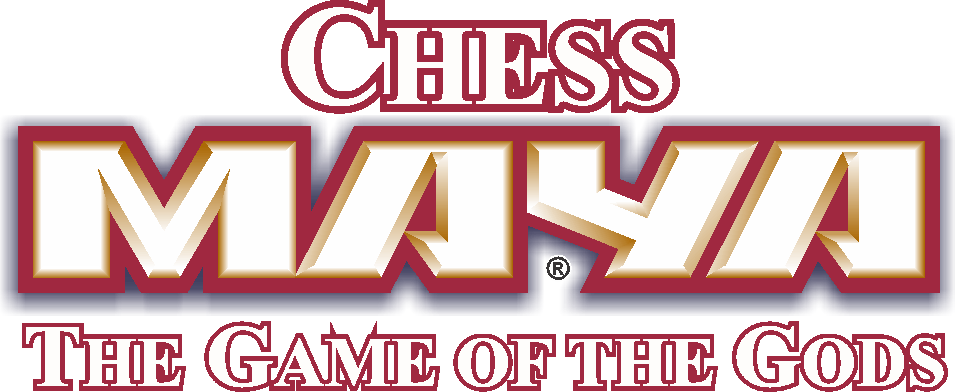
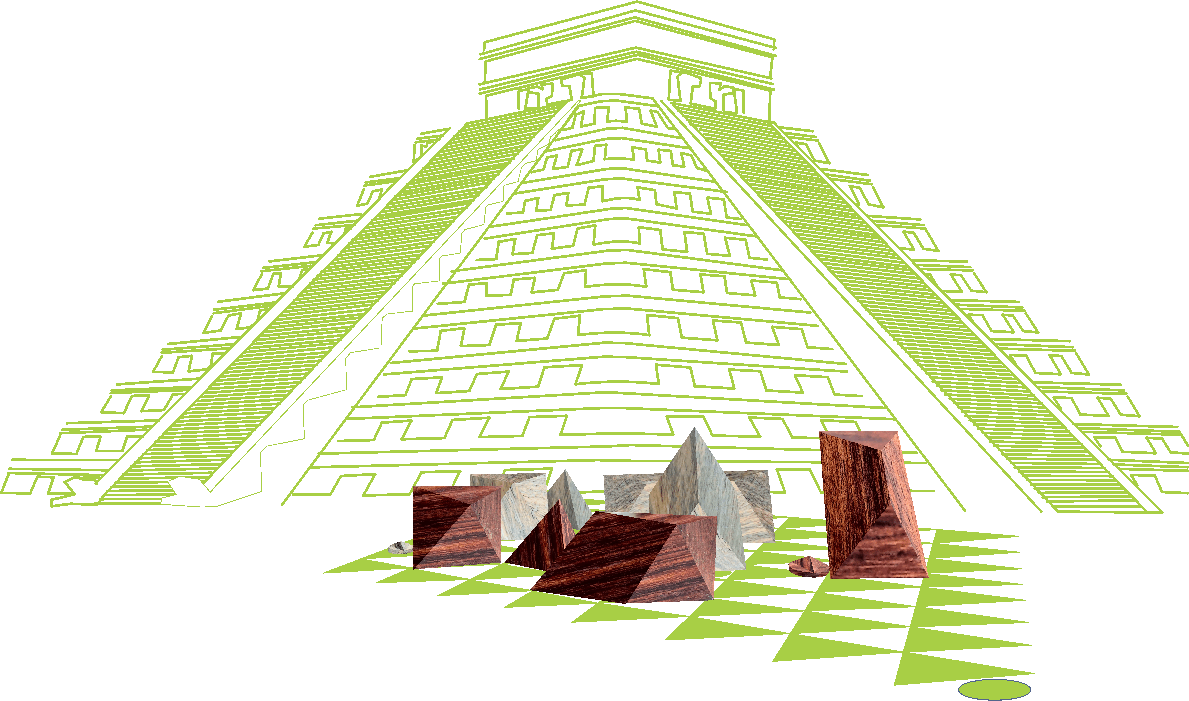
![]()
![]()
![]()
![]()
Some properties of Board and Pieces
The Maya Chessboard
as a Dynamic Set
Despite its static functionality as a plane element, which constrains the performance of each of the pieces, four prisms per player (Defense, Attacker, Guardian and Captain) who rotate on him, and that solids have a tri-dimensional behavior, and a fifth element (Leader) for every opponent, with two-dimensional behavior, the Maya Chess board "The Game of the Gods" is not a static set.
The Maya Chessboard do not stay immutable, insensitive to movements on him n movements determine victory or defeat in a game.
No, the Mayan Chessboard its involved stimulating each of the movements on it are designed and carried out, as if enjoying the chaotic complexity that by virtue of the elements that make it up in any of the four options to achieve the K'Atun.
Let's look more critically each of the subsets that compose it and how enhance the complexity of their roles in a game.
Temples of the Moon
The Temples of the Moon are the first choice you have in a game, however in some cases can be taken as a source of distraction while the real reasons are strategic core positions at the apex of the long diagonal: the Temple of the Sun.
In essence the definition of raw strategy always cheating the opponent, so that if the opponent K'Atun expected to reach the Temple of the Moon, will draw on all their devices to avoid it.
Temples of the Sun
Access to the Temple of the Sun, is the quintessential of K'Atun when the opponent abandon the game.
The Temples of the Sun as well as second objective assumes the Temples of the Moon an active position, representing alternative resource, as any of the two options leads to reach the K'Atun.
Forbidden Zones
Forbidden Zones become an active resource, as in the analysis of the strategy to be followed, should seek access to the Temple of the Sun opponent invariably will have to consider the restrictions that otherwise the pieces are objective: Captain (C) , Guardian (G), Attacker (A) and Defense (D).
Forbidden Zones
Separation Lines
The lines separating the Forbidden Zone are always there to recognize when the opponent has taken positional advantage and access to Temple of the Sun is imminent, so that forces us to recognize the K'atun honestly on against, congratulating the winner with a handshake.
Triangles of Double Access.
Each of the contestants has three spaces
matching the three vertices of the Temples of the Moon (joining them
in the opposite direction).
TU of Double Access
White Team
f6, h6 and h10 attached to the Temple of the Moon in the same color
for the vertices.
TU of Double Access
Black Team
i6, i10 and k6, attached to the Temple of the Moon of the same color
by its vertices.
Nomenclature in Four Steps
Central Zone of Game Board
Step 1. - Write the acronym indicating which is the piece that is moving, is this; Leader L, Captain C, G for Guardian, A to Attacker and D for Defense.
Step 2. - You have to indicate the Plain of Triangles (a to p) in which the pieces is described.
Step 3. - Determine the Location Triangles where you placed the piece that you are describing.
Step 4. - Specifically in the description of the standing Attacker (A) and Defense (D) use the terms: N, S, E, W.
EXCEPTION:
The exception is in the Zenith position of
the pieces as described Attacker with the letter Z.

Central Zone of Game Board
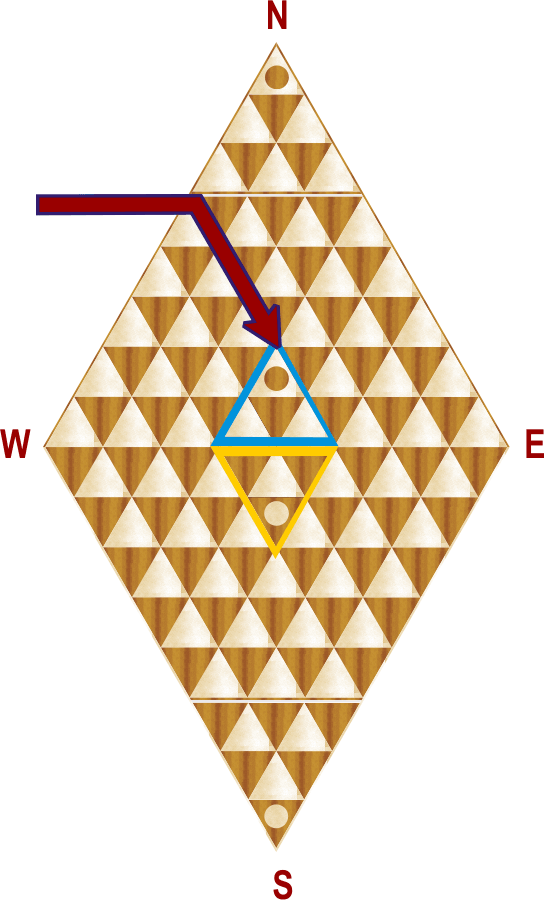
Definition of Central Zone
The Central Zone
of the Maya Chessboard "The Game of the Gods" is determined as
follows:
For the player of the clear pieces:
g7, h7, h8 and h9.
For the player of the dark pieces
i7, i8, i9 and j7
The Central Zone of the board represents the area where invariably must pass the Leader (L) of each of the gamers, in search of the Temple of the Moon opposite of the opposite team, especially if the strategy to be developed has little to do with the side of the game board or the Temple of the Sun of the opponent.
In the course of a game, it can be noted that restrictions on the Central Zone of the board, are becoming more lax.
Some Peculiarities of the Pieces
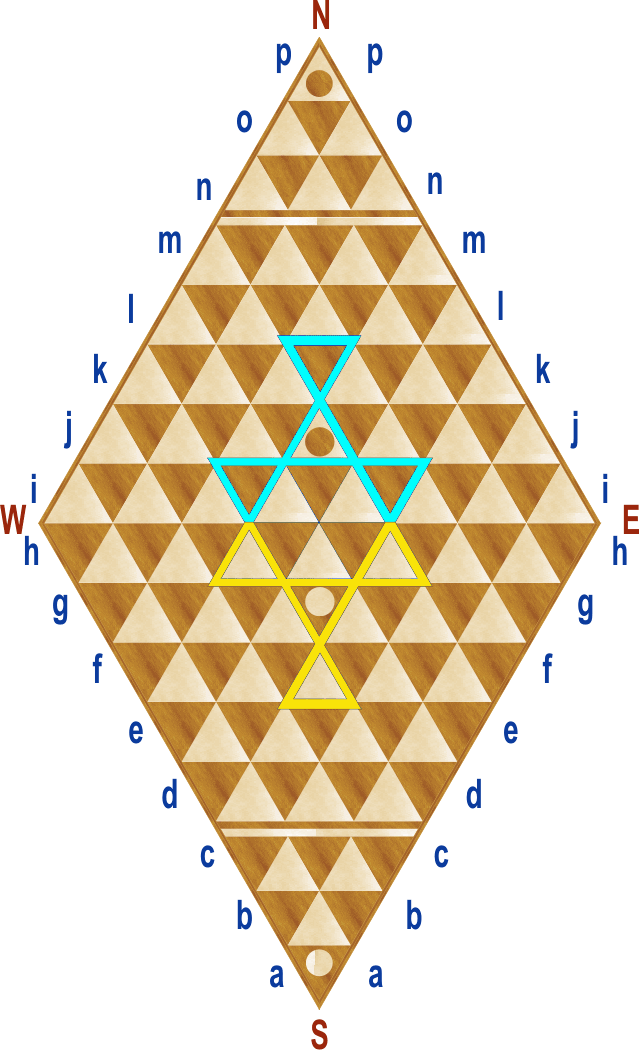
Triangles of
Double Access.
Each of the contestants has three spaces
matching the three vertices of the Temples of the Moon (joining them
in the opposite direction).
TU of Double Access
White Team
f6, h6 and h10 attached to the Temple of the Moon in the same
color for the vertices.
TU of Double Access
Black Team
i6, i10 and k6, attached to the Temple of the Moon of the
same color by its vertices.

Among the peculiarities of the prisms with which Maya Chess "Game of Gods" plays, are the following.
They are two of the five
Platonic Solids as you already have noticed, the pieces that give
rise to replication Maya Chess are two of the Platonic solids:
Platonic Solids
1. Tetrahedron,
2. Hexahedron Cube or Cube
3. Octahedron or cube
4. dodecahedron and
5. Icosahedron.
The Maya Chess pieces are formed from the tetrahedron and
octahedron.
Let's see it graphically:
Captain (C)
(Tetrahedron)
It is the first of the Platonic solids.
Guardian (G)
(Octahedron)
It is the third of the Platonic solids.
 Attacker
(A)
Attacker
(A)
(Heptaedron)
It forms a octahedron and an tetrahedron.
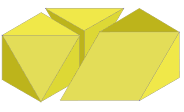 Defense
(D)
Defense
(D)
(Irregular octahedron)
They form two tetrahedra and two octahedra
Enlarged Central Zone
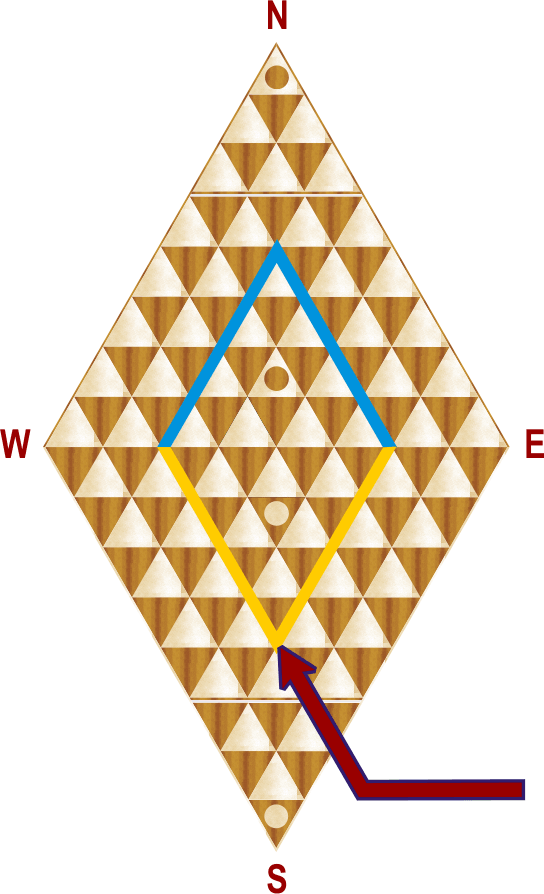
Enlarged Central Zone
During the course of a game Central Zone expands to four times its original size, starting from the TU e5 White player till TU l5 from Black player.
About your 13 movement, the importance of play moves toward the flanks more often.
The importance that has been given, regardless of where the most sensitive part of a game if the end is to end up K'Atun the Temple of the Moon or the Sun Temple almost always ends within the central area.
©2001-2013
The CEM Team
(Epistemic Community of Mexico)
Socially Responsible..